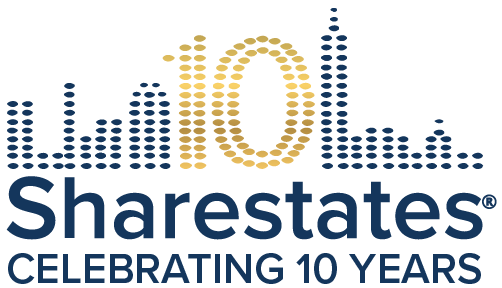Results from the second quarter of 2018 are in, and they continue to demonstrate Atlanta’s strong real estate market trends. Lease rates ended at a historic high of $26.77 per square foot, and absorption was flat as tenants moved in and out of housing. Construction projects have been active in the Midtown region, which has been expanding available inventory, and available vacancies are up from last year.
Strong consumer demand has pushed rents up lately. Class A rents in urban regions rose a healthy 12.7% since 2017, and suburban rents rose by 7.2% in that year. Investors have taken notice as the creative office segment experienced some strong momentum in rent increases and absorption, and commercial real estate has reached a healthy equilibrium.
Multifamily housing in Atlanta has experienced a lot of strong trends in the last quarter. While Class A apartments have slowed considerably, Class C apartments have begun to fuel the market. Many expensive, top-tier units were constructed over the past four years, and that’s had the result of increasing overall vacancy. In order to fill some of those openings, some high-end apartments have had to sacrifice profits in order to make concessions and attract new clientele. Still, though, the surplus of high-end apartments means that many potential buyers choose to remain in cheaper Class C apartments. Despite the disadvantage of these vacancies, this quarter still saw faster rent growth than most of the metro area. Overall, multifamily units saw a 4.6% increase in effective rents from last year.
Construction continued into the second quarter, but not at an overwhelming pace. The Buckhead, Midtown, and Sandy Springs communities will be receiving a total of 4800 apartments. From a wider vantage, 9300 units are set to be completed by the end of 2018. In total, 12,000 units were constructed year-over-year since the second quarter of 2017, 1600 more than were completed the year before.
Investment Trends
Job growth has been consistent in Atlanta thanks to the city’s pro-business environment. This has resulted in conditions that fuel household formation and drive investor interest. Non-local investors have been increasingly competitive with local investors, and even international investors have been getting involved. Investors are especially active in the Buckhead and Midtown areas. In both Buckhead and Midland, cap rates between 4.5% and 5.3% can be found. Investors have already started looking toward the Cumberland/Galleria area and Sandy Springs due to how competitive the scene is, and because cap rates under 6% can still be found there.
In the southwestern suburbs of Atlanta, investors interested in the $1 million to $10 million price tranche have been active. The suburbs are home to largely blue-collar workers, and the area had significant reductions in vacancies.
The prospects for the market are likely to continue to improve since the employment outlook for Atlanta is promising. Over 44,000 jobs were created in the Atlanta metro area over the past year, cutting unemployment down to 4.3% in the city. The greatest employment increases were in the trade, transportation, and utility sector, with education and health services, close behind. To meet the growth in these trades, investment in non-luxury multifamily housing should be a safe investment in Atlanta.
Vacancy And Rent
So far, demand and supply additions have maintained at pace, holding vacancy at 5.9%. While vacancy has held steady across Atlanta, Class C multifamily units saw a 100-basis-point decrease in the rate over the last year to 5.5%, while the average rent for Class C units rose by 6.2%. It’s clear that apartments servicing a working-class population are growing to take up a bigger share of the total housing market. Atlanta is currently doubling the United States’ overall five-year household growth, so it is a lucrative area for investment.
Across the Atlanta metro area, there was a 5% increase in effective rents year-over-year. Building on last year’s similar increase, that brought the average rent up to $1,143. Faster rent growth occurred in many suburban locations. For instance, in the Far West Atlanta Suburbs submarket, rent growth climbed 8.7% to reach $975 per month. Since 2014, the average rent has climbed almost $250 a month.
Overall, these demographics have made Atlanta apartments an exciting prospect for investors. Transaction velocity rose about 9% during the last year, and the high household formation rate in Atlanta and steadily-climbing rent growth helped maintain that interest. The rise of Class C assets and affordable options has also lowered the barrier of entry for potential investors and makes crowdfunding investment options look even more attractive. Vacancy continues to decline and rent continues to rise for Class C assets.
Investment Outlook
The Federal Reserve lifted the lending rate to 1.5% by increasing the federal funds rate by 25 basis points. An upgraded economic forecast that accounted for the rollback in regulations and the recent tax cuts made growth projections much more optimistic over the next two years. The Fed decided to move toward two additional rate hikes in 2018 and set the stage for as many as four rate hikes in 2019.
As interest rates rise, lenders will see capital costs rising in tandem, which may also result in higher lending rates for investors as well. Some competitive lenders might choose to absorb some portion of that rising cost, of course, while higher borrowing costs may push buyers to seek cap rates on the higher end. Still, the optimistic economic outlook should push rent growth well over the rate of inflation over at least the next year. Thanks to that market optimism, sellers continue to have higher asking prices, widening the expectation gap as demand trends and performance remain encouraging.
Government agencies currently control slightly over 50% of the apartment lending market share. National or regional banks account for around 25% of the share. Portfolio lenders should tend to require loan-to-value ratios of around 70% and offer interest rates in the 3.75-4.5% range. Given the recent tax reform and fiscal stimulus, the US economy should continue its strong growth trends, and rental demand should continue at its current rate. Apartment vacancies should rate at around 5% at the end of 2017 if trends continue.
Conclusion
Atlanta is a promising market for investors, especially if they keep in mind that Class C multifamily options are booming. The current trends of growth show little sign of stopping, and Atlanta shows all the signs of being a dynamic and fruitful market for the next year.


